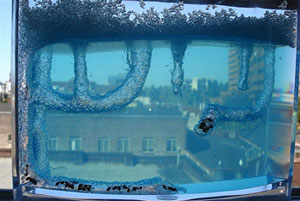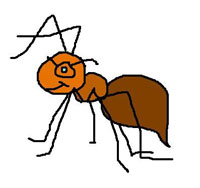
Source: hitcow's ant farm, Ian Broyles, Flickr
In the previous sections, you learned how a writer conveys attitude, or tone, through diction and details and sometimes through irony. Let's now look at another passage and examine how diction, details, and irony work together to create tone. The following excerpt is from a chapter titled "The Problem with Pets" in Dave Barry's book Bad Habits.
Barry often uses exaggeration in his writings. Read the passage, paying attention to the words and details in the first paragraph that help create the tone. Also, see if you can determine the irony in the passage. (Hint: The writer will tell you something is ironic in the first paragraph!) Highlight the ironic events by clicking on them in the box below. Then, see if you can identify the writer's tone. Consider both paragraphs.

 Now, using your notes, explain what is ironic in the passage. When you are finished, check your understanding to see a possible response.
Now, using your notes, explain what is ironic in the passage. When you are finished, check your understanding to see a possible response. Sample Response:
First, it is ironic that Barry's mother spends money on ants that have to be sent from Chicago when the family already has ants at home. Then, it is ironic that the Chicago ants, which were fed and protected from predators, died while the local ants continued to thrive.

Source: Mr. Insect Ant, Mr. Insect, Wikimedia
How did you do? Remember that to fully understand a text, you should read it closely. Pay attention to the diction and details that the writer chooses, and look for examples of irony. Irony may not be present in a work, but if it is, it can provide a clue to the writer's attitude toward a subject. Using close-reading skills will not only help you identify a writer's tone, but it will also enhance your reading experiences.